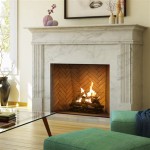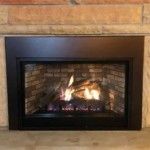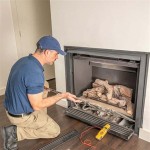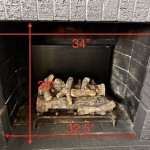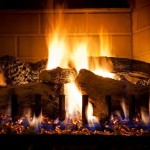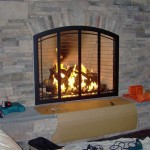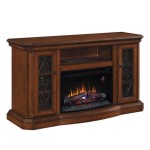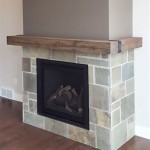Tile Adhesive for Fireplaces: A Comprehensive Guide
Selecting the correct tile adhesive for fireplace installations is crucial for ensuring the longevity, safety, and aesthetic appeal of the finished project. Fireplaces are subject to significant temperature fluctuations and potential movement, demanding adhesives formulated to withstand these challenging conditions. This article provides a detailed overview of the factors to consider when choosing tile adhesive for fireplace applications, highlighting the types of adhesives best suited for these installations, the installation process, and essential safety precautions.
Understanding the Demands of Fireplace Installations
Fireplaces present several unique challenges that standard tile installations do not. The primary challenge is the extreme temperature variation. During operation, the fireplace surround experiences intense heat, while when inactive, it cools down to ambient temperature. This constant expansion and contraction can stress the adhesive bond, leading to tile cracking or debonding if the wrong adhesive is used. Furthermore, fireplaces are typically constructed of materials such as brick, concrete, or cement board, each possessing different porosity and thermal expansion characteristics. The adhesive must be compatible with both the substrate and the chosen tile material to ensure a strong and lasting bond.
In addition to thermal stress, structural movement can also impact the integrity of the tile installation. Fireplaces can settle over time, causing minor shifts in the structure. An adhesive with sufficient flexibility is needed to accommodate these movements and prevent tiles from cracking or becoming detached. Moreover, certain fireplace designs incorporate features like mantels or hearth extensions that may place additional weight and stress on the surrounding tilework. The adhesive must possess the necessary load-bearing capacity to support these elements.
Types of Tile Adhesive Suitable for Fireplaces
Several types of tile adhesive are formulated to withstand the demanding conditions of fireplace installations. Modified thin-set mortars are generally the preferred choice, offering a balance of heat resistance, flexibility, and bonding strength. These mortars contain polymer additives that enhance their performance in high-temperature environments and improve their ability to bond to a variety of substrates. Specifically, polymer-modified mortars designed for large and heavy tiles are often recommended for fireplace surrounds, as they provide enhanced sag resistance and support the weight of larger tiles.
Epoxy mortars are another option for fireplace installations, particularly in situations where enhanced chemical resistance is required, such as when using natural stone tiles that may be susceptible to staining. Epoxy mortars are exceptionally strong and durable, providing excellent resistance to heat and chemicals. However, they typically have a shorter working time and require more precise application techniques than modified thin-set mortars, making them more suitable for experienced installers.
For certain applications, pre-mixed acrylic adhesives may be considered, but their suitability for fireplace installations is limited. While convenient to use, pre-mixed adhesives generally lack the heat resistance and bonding strength of modified thin-set or epoxy mortars. They may be suitable for small, decorative tile accents in areas that are not directly exposed to intense heat, but should not be used for the main fireplace surround.
Installation Best Practices and Safety Precautions
Proper installation techniques are essential for ensuring the success of any fireplace tiling project. The first step is to thoroughly clean and prepare the substrate. Remove any loose debris, dust, or grease that could interfere with the adhesive bond. If the substrate is porous, such as brick or concrete, apply a primer to improve adhesion and reduce the rate at which the substrate absorbs moisture from the mortar. Ensure the primer is fully dried before applying the tile adhesive.
When mixing the mortar, carefully follow the manufacturer's instructions regarding water-to-powder ratio. Overwatering the mortar can weaken its bonding strength, while insufficient water can make it difficult to work with. Use a mixing drill with a paddle attachment to ensure a consistent and lump-free mixture. Allow the mortar to slake, or stand for a few minutes, before remixing and applying it to the substrate.
Apply the mortar using a notched trowel that is appropriately sized for the tile being used. The trowel creates ridges in the mortar that provide a mechanical key for the tile to grip. Hold the trowel at a 45-degree angle and apply even pressure to create consistent ridges. Press each tile firmly into the mortar with a slight twisting motion to ensure full contact. Use tile spacers to maintain consistent grout lines. After the mortar has cured according to the manufacturer's instructions, apply grout to fill the spaces between the tiles. Choose a grout that is specifically formulated for use in high-temperature environments.
Safety is paramount during any tile installation project. Wear appropriate personal protective equipment (PPE), including safety glasses, gloves, and a dust mask, to protect yourself from potential hazards. Work in a well-ventilated area to minimize exposure to dust and fumes. When cutting tiles, use a wet saw to minimize dust generation. Dispose of waste materials properly, following local regulations. If working with epoxy mortars, be particularly cautious to avoid skin contact, as some epoxy resins can cause irritation or allergic reactions. Always consult the manufacturer's safety data sheets (SDS) for specific safety information regarding the chosen adhesive and grout.
By understanding the specific demands of fireplace installations, selecting the appropriate tile adhesive, and following best practices for installation and safety, homeowners and contractors can ensure a beautiful, durable, and safe fireplace surround that will provide years of enjoyment.

Heat Resistant Tile Adhesive Ready Mixed 5kg Bucket Vitcas

Heat Resistant Tile Adhesive Caulking Gun Tube Vitcas

Fixatile Heat Resistant Tile Adhesive Fireplaces Are Us

Heat Resistant Tile Adhesive 5 Kg Tub Fireplace Tiles
:fill(white)/www.toppstiles.co.uk/static/uploads/2020/07/Fireplace-tiling-Batik.jpg?strip=all)
Tips For Decorating Your Fireplace Topps Tiles

Heat Resistant Tile Adhesive Buy From Firetile

Fireplace Remodel Ideas Using L And Stick Tile For 2024 Stickgoo

Diy Fireplace Makeover With Vinyl Tiles Sew Much Ado

Can I Use L And Stick Tile For Fireplace Surround Yes It Is A Gre Commomy

Easy L And Stick Stone Fireplace Surround Sondra Lyn At Home
Related Posts

